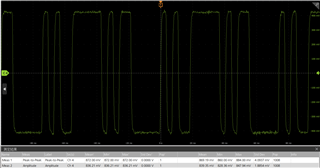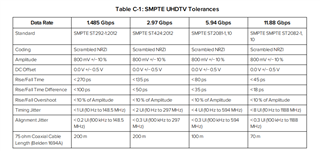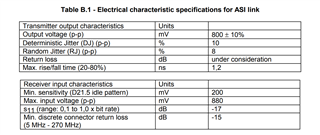Tool/software:
Hello, Team
We have a question about LMH0002SQ.
We use LMH0002SQE/NOPB for ASI driver.
In the specifications, the output (Vsdo) is written as 750 to 850mV (p-p) under the conditions (REF=750Ω1%).
When measured with the oscilloscope's maxhold setting, some ICs output more than 880mV.
This results exceed the specifications of the DVB-ASI standard.
We use this IC in a variety of products, all of which have the same circuit configuration.
Looking at some outputs, the results are low (819 (average), 832 (maxhold)) and high (869 (average), 884 (maxhold)).
There appears to be a difference in the output value depending on the LOT number. Also, there are some individuals with the same LOT number that are different.
The environment is the BNC connector at the DRIVER output circuit → BNC cable → 75Ω⇔50Ω converter → oscilloscope.
It says that the specified output (Vsdo) is 750 to 850mV (p-p) under the conditions (REF=750Ω1%), but does it vary as shown above?
Regarding the notation written in the data sheet, in terms of the oscilloscope, is it the result of max hold or the result of amplitude?
Under what conditions (measurement environment, circuit) are the results measured?
Best Regards,
Miyajima





